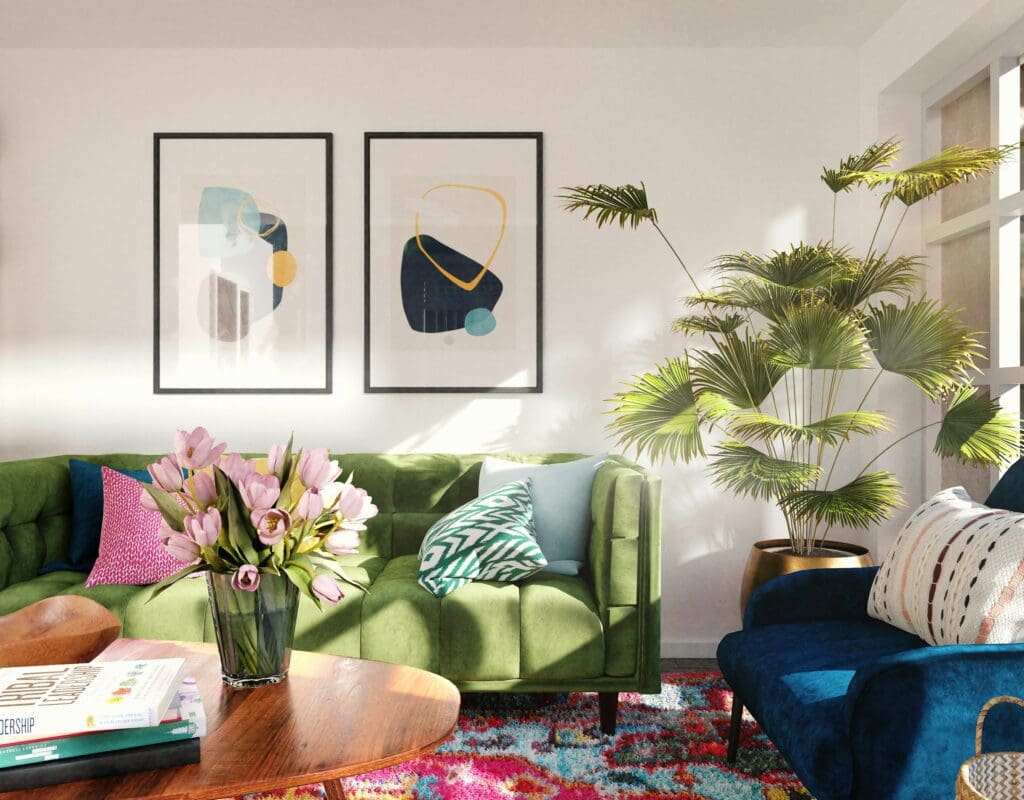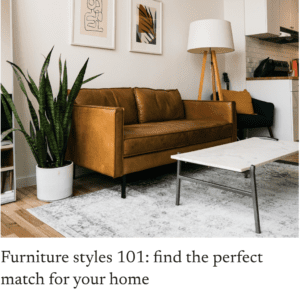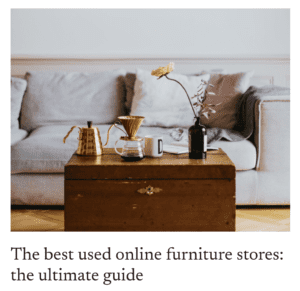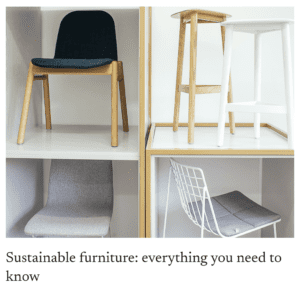In this post: we take a look at a variety of styles and help you find the right interior design style for you.
The Home Green is reader-supported and may receive a commission if you decide to make a purchase through a posted link, at no cost to you. I only include products I would consider for my own home.
Why does knowing different interior design styles matter?
You might think that having a big list of rules when it comes to decorating your home can take the fun out of it. You wouldn’t be wrong – if something makes you happy, we say go with it. That said, if you feel continually frustrated that your home isn’t quite coming together the way you want, maybe some guidance could help.
If you have a vision of a put-together home, one of the things that can stand in your way is buying individual items without an overall vision or plan. Random acts of decorating can leave you with a space that doesn’t feel harmonious which can be frustrating.
While few people fit perfectly into one design style, an understanding of what you like and what feels right in your home can be helpful. If you appreciate a lot of interior design styles and can’t figure out how to blend them together or just have no idea whatsoever what your design style is, this article is for you. We’ll review some of the major interior design styles, help you determine what feels right for you, and give you the first tips on how to get started bringing your style to life.
In this article:
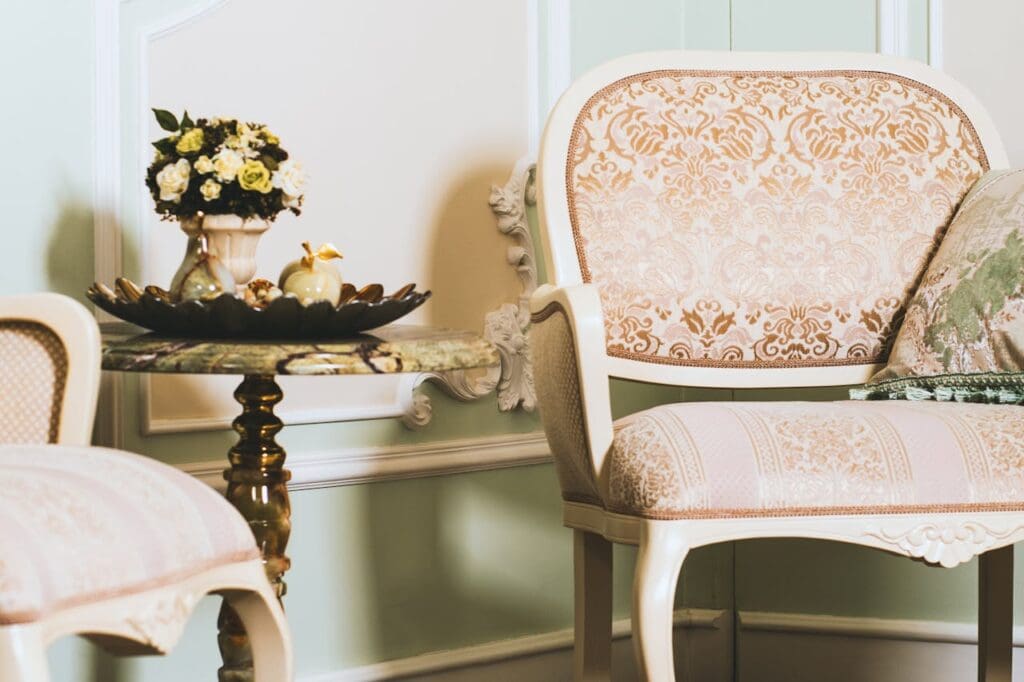

Traditional interior design style
While there is quite a broad range of ways that traditional interior design can come to life, at its roots it’s a style inspired by classic European aesthetic. It’s the arguably most timeless and elegant of the popular interior design styles and is marked by symmetrical and sometimes quite intricate details. Traditional interior design often calls to mind dark wood, warm and muted color palettes, and rich and formal details.
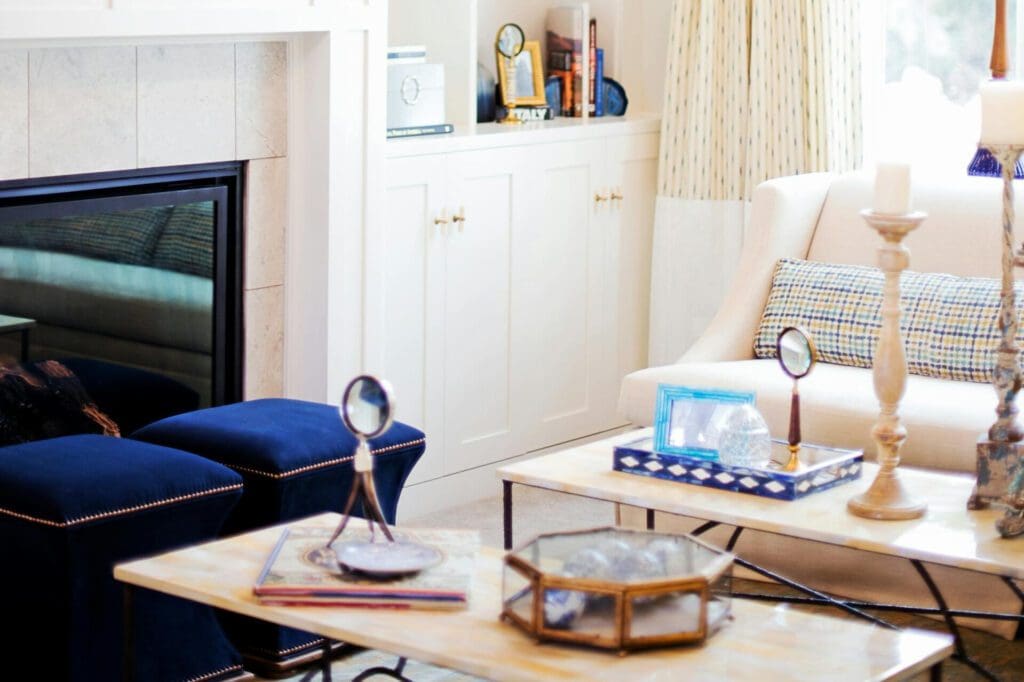

Transitional interior design style
Transitional interior design is everywhere these days – for good reason. This interior design style takes traditional elements and adds a more contemporary spin. Transitional interior design is often a more neutral and simplified version of its traditional cousin. While traditional interiors often include dark wood, and intricate detail, transitional tends to focus on open spaces, and light and bright details. One of the hallmarks of transitional style is that while it feels current and polished, it also feels comfortable and timeless.
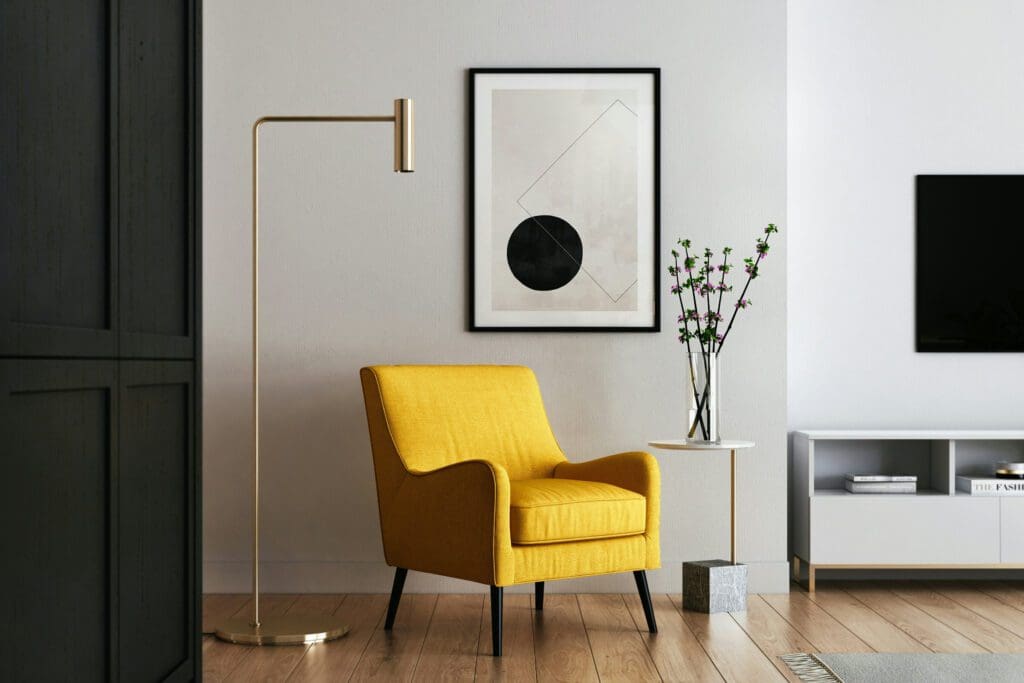

Contemporary interior design style
Contemporary interior design is a constantly evolving style that reflects what is most current. Although it isn’t static, there are some aspects of contemporary style that remain fairly consistent. These elements include clean lines, bold artwork and accessories, bright, natural light, and frequent use of geometric patterns.
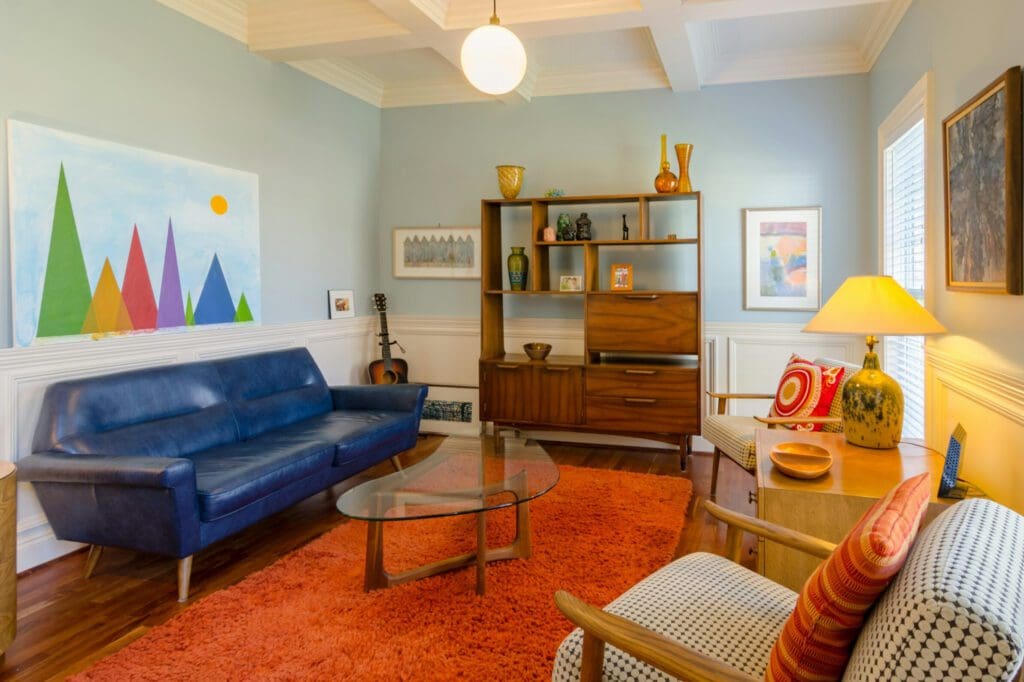

Modern interior design style
While Contemporary and Modern interior design are often confused, Modern design originates from a specific period: the early to mid-20th century. Modern interior design embodies a sleek and minimalist aesthetic characterized by clean lines, functionality, and simplicity. It emphasizes uncluttered spaces with a focus on essential elements, favoring neutral color palettes to create a timeless backdrop for design.
Open floor plans and oversized windows are common features, maximizing natural light and creating a sense of expansiveness and connection to nature. Industrial materials like concrete, steel, and glass are often incorporated and are often left in their raw state to showcase their simplicity and beauty.
Modern interiors prioritize functionality, integrating multi-functional furniture and smart home technology seamlessly into the space. Overall, modern design creates sleek, sophisticated environments that feel both timeless and efficient, emphasizing clean lines and a minimalist approach to decor.
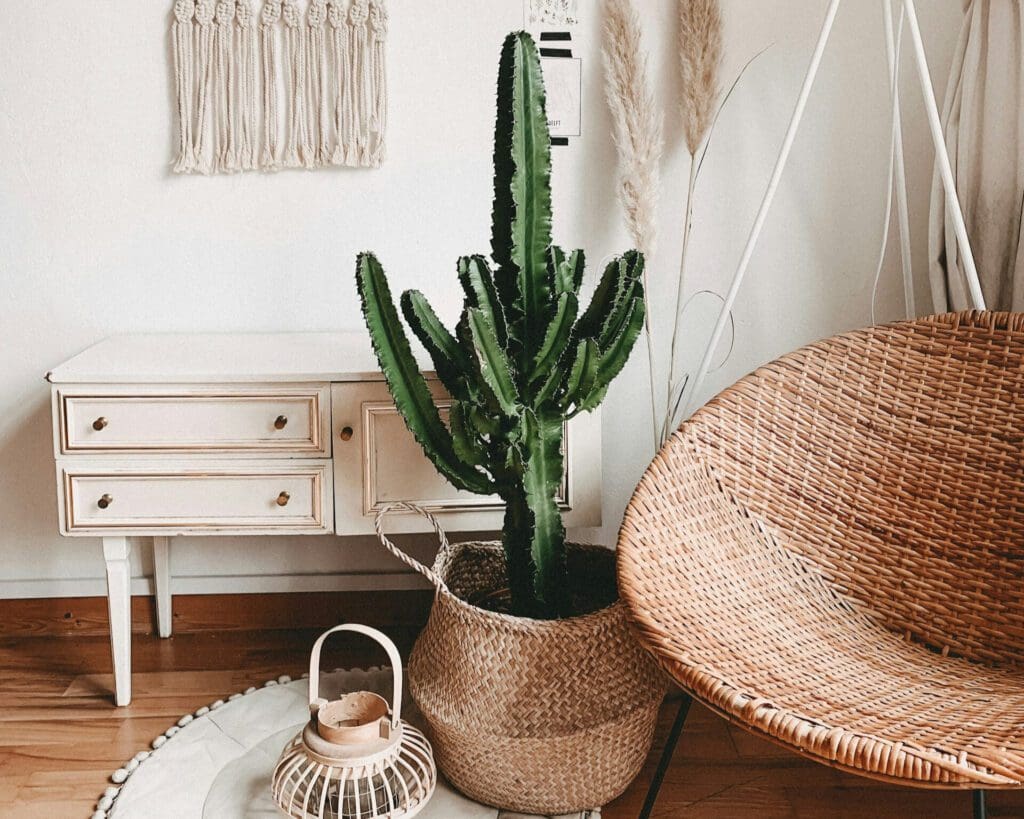

Boho interior design style
Boho (short for bohemian) is an interior design style that is characterized by a free-spirited, eclectic, and laid-back aesthetic. Boho interiors often blend elements from various cultures, periods, and styles, creating a unique and vibrant look. Commonly used items include vibrant colors, natural materials, handmade accessories, and layered textures.
If you tend to be a free spirit who isn’t interested in following a bunch of interior design rules, a boho vibe can help you express your personality and create a space that reflects your unique and individual style.
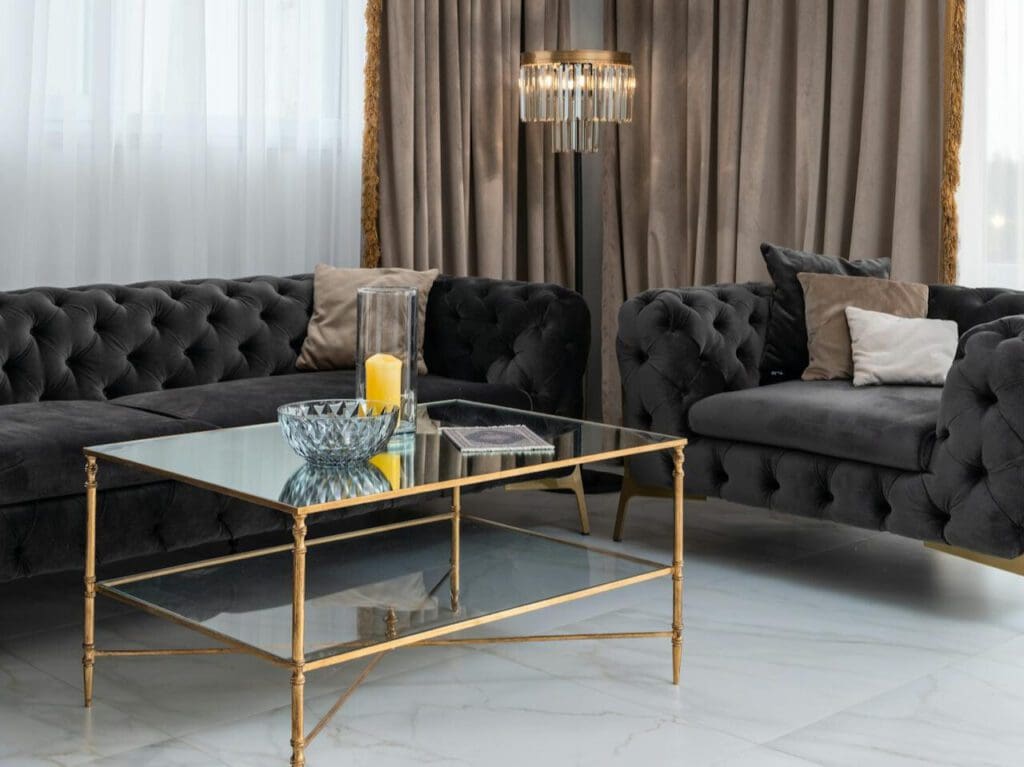

Glam interior design style
Glam interior design style, short for “glamorous,” is all about luxury, opulence, and sophistication. It often incorporates lavish elements such as crystal chandeliers, mirrored furniture, plush fabrics like velvet and silk, and metallic accents like gold or silver.
The color palette in glam interiors tends to be rich and dramatic, with jewel tones such as deep purples, emerald greens, and royal blues. This style often features ornate details, intricate patterns, and layers of texture to create a sense of glamour and extravagance. Overall, glam interior design aims to evoke a sense of grandeur, luxury, and indulgence.
Glam interior design is also commonly referred to by several other names, often depending on specific variations or influences, including:
- Hollywood Regency: This style draws inspiration from the golden age of Hollywood and features glamorous elements, bold patterns, and luxurious textures.
- Art Deco: Art Deco style is characterized by geometric shapes, sleek lines, and luxurious materials, reflecting the elegance and glamour of the 1920s and 1930s.
- Luxe: Short for “luxurious,” this term encompasses any design style that prioritizes opulence, richness, and sophistication.
- Contemporary Glam: This style blends contemporary design elements with glamorous touches, creating spaces that feel both modern and luxurious.
- Modern Glam: Similar to contemporary glam, modern glam design combines modern aesthetics with glamorous accents and finishes.
- Vintage Glam: Vintage glam incorporates glamorous elements from past eras, such as mid-century modern furniture, retro-inspired patterns, and classic Hollywood-inspired decor.
These names may overlap or be used interchangeably depending on the specific features and influences present in the design.
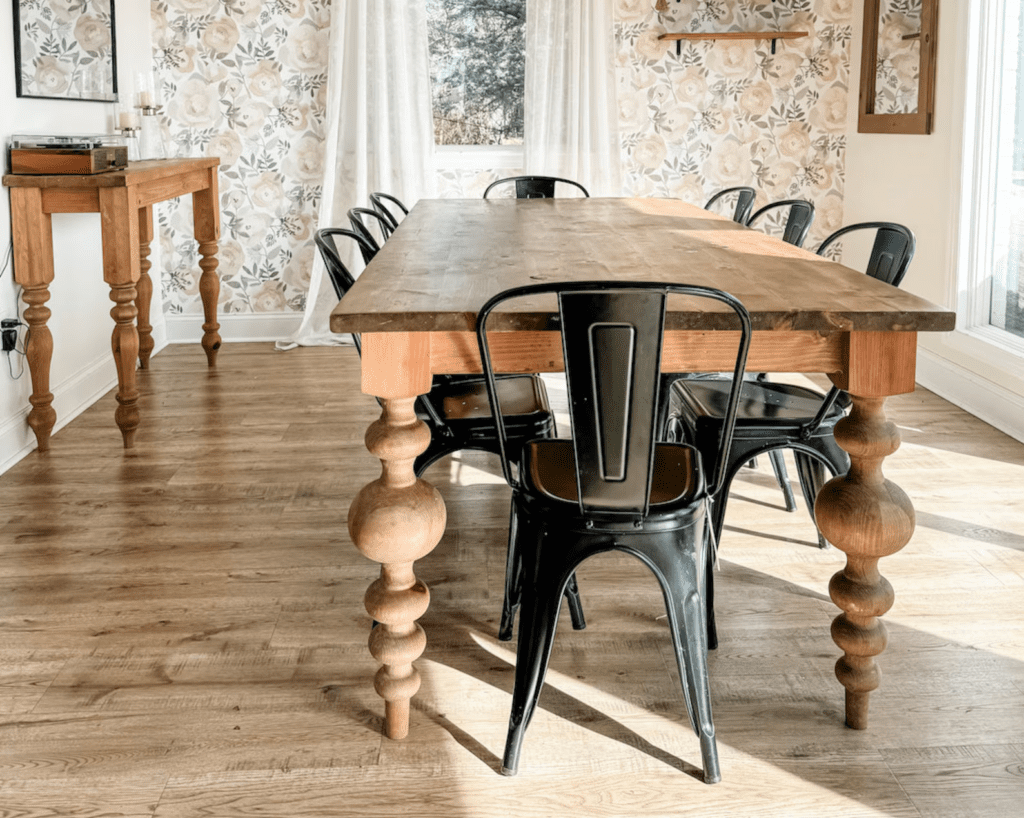

Image courtesy of The Farmhouse Finds – table available for sale at link
Rustic/Farmhouse interior design style
A Rustic of farmhouse interior can be a great style if you want your home to be current and on trend but still cozy and comfortable. Rustic or farmhouse interior design is characterized by a warm, inviting aesthetic that reflects the simplicity and charm of rural life. Key features of this style include:
- Natural materials: Rustic interiors often feature natural materials such as wood, stone, and exposed brick. These materials add texture and warmth to the space, creating a cozy and inviting atmosphere.
- Weathered finishes: Furniture and decor in rustic design often have a weathered or distressed finish to give them a worn-in look, evoking a sense of history and nostalgia.
- Neutral color palette: The color palette in a farmhouse interior is typically neutral in tones like whites, creams, beiges, and browns. These colors help create a serene and calming environment.
- Vintage elements: Vintage or antique pieces are commonly incorporated into rustic design to add character and charm. This could include items such as reclaimed wood furniture, vintage textiles, or antique accessories.
- Cozy textiles: Soft and cozy textiles such as wool throws, faux fur rugs, and linen curtains are often used to enhance the comfort and warmth of rustic interiors.
- Farmhouse-Inspired Details: Details such as barn doors, sliding barn-style hardware, exposed beams, and farmhouse sinks are typical features of rustic or farmhouse design, adding to the authentic rural aesthetic.
- Open spaces: Rustic interiors often feature open floor plans and spacious layouts, allowing for a seamless flow between different areas of the home and creating a welcoming environment for family and friends.
Overall, rustic or farmhouse interior design embraces a sense of simplicity, authenticity, and comfort, creating spaces that feel relaxed and lived-in.
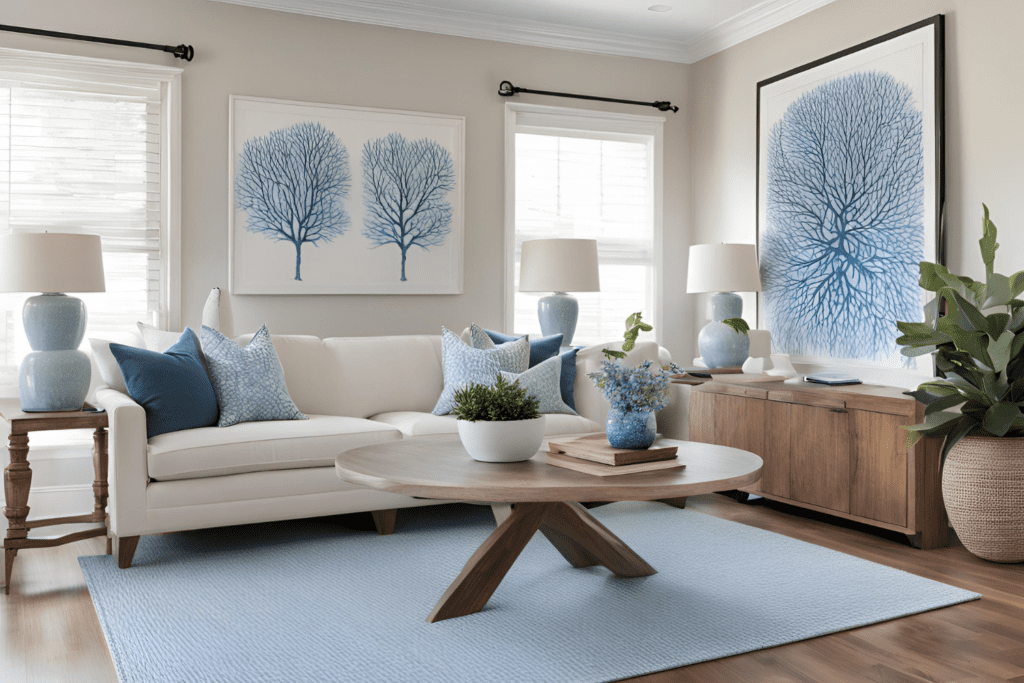

Coastal interior design style
A coastal interior design style captures the relaxed and breezy atmosphere of beach living, drawing inspiration from seaside cottages, beach houses, and coastal landscapes. Key elements of this style include a light and airy color palette dominated by soft blues, greens, whites, and sandy neutrals, reminiscent of the sea, sky, and sand. Natural materials such as weathered wood, rattan, and jute are prominent, evoking a sense of coastal charm and texture.
Furniture choices are often casual and comfortable, including slipcovered sofas, wicker chairs, and reclaimed wood tables. Nautical elements like rope accents, seashell decor, and maritime motifs are popular, as well as large windows and ample natural light enhance the feeling of openness and connection to the outdoors. Overall, a coastal interior design style feels relaxed, inviting, and infused with the laid-back spirit of coastal living.
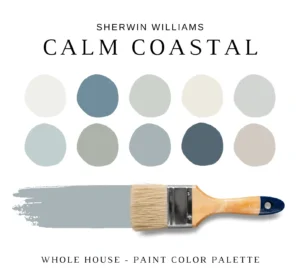

Calm Coastal color palette image courtesy of and available for sale at eDesigns by Nish
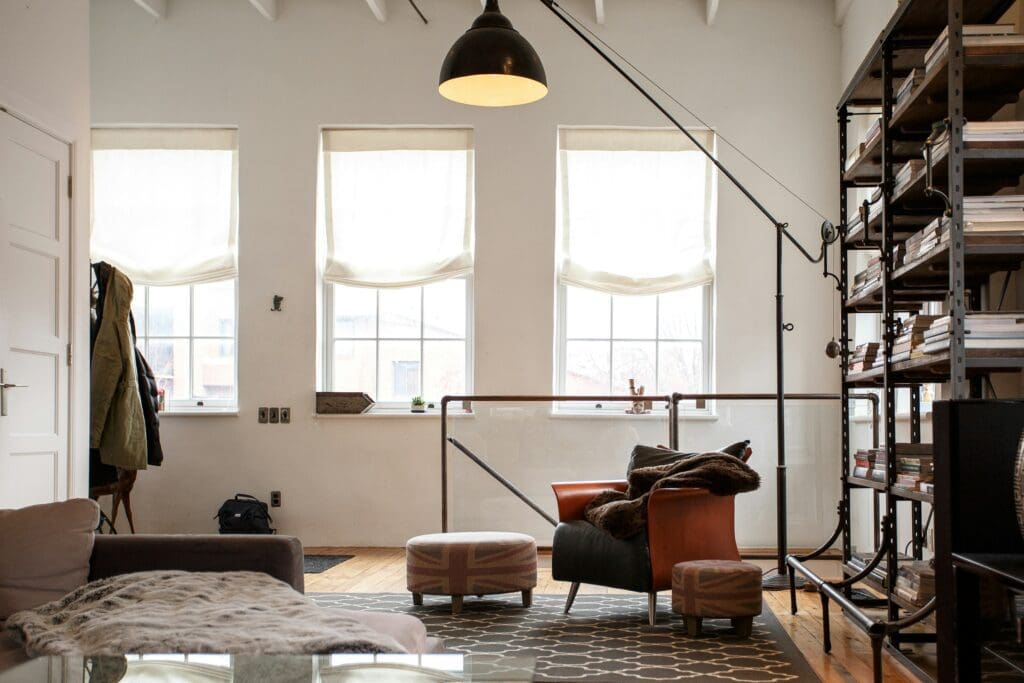

Industrial interior design style
Industrial interior design style draws inspiration from old factories and warehouses, transforming them into stylish and functional living areas. These spaces are characterized by raw materials like concrete floors, exposed brick walls, metal accents, and visible ductwork, which results in a rugged, masculine feel. In addition, industrial interior design elements often utilize reclaimed and salvaged items, such as vintage furniture and repurposed machinery.
Open spaces and spacious layouts are common, reflecting the expansive nature of industrial buildings and allowing for flexibility and creativity in design. With a neutral color palette dominated by shades of gray, brown, black, and white, industrial interiors provide a neutral backdrop that highlights the raw materials and metal accents.
Overall, the industrial design style embraces the raw and rugged beauty of industrial spaces, creating interiors that are both functional and stylish, with a distinct urban edge.
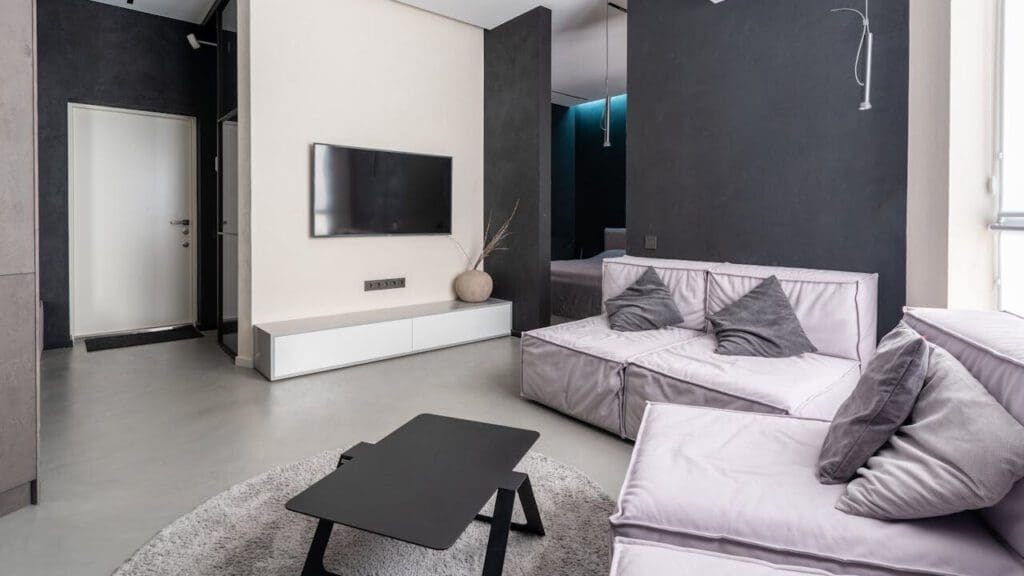

Minimalist interior design style
Minimalist interior design is a style characterized by simplicity, clean lines, and a focus on functionality. It emphasizes the idea of “less is more,” stripping away excess ornamentation and clutter to create serene and uncluttered spaces. Key elements of minimalist design include neutral color palettes, sleek furniture with simple geometric shapes, and an emphasis on natural light and open spaces. The goal is to create a calming environment that promotes relaxation and mindfulness, while still maintaining a sense of elegance and sophistication through thoughtful design choices.
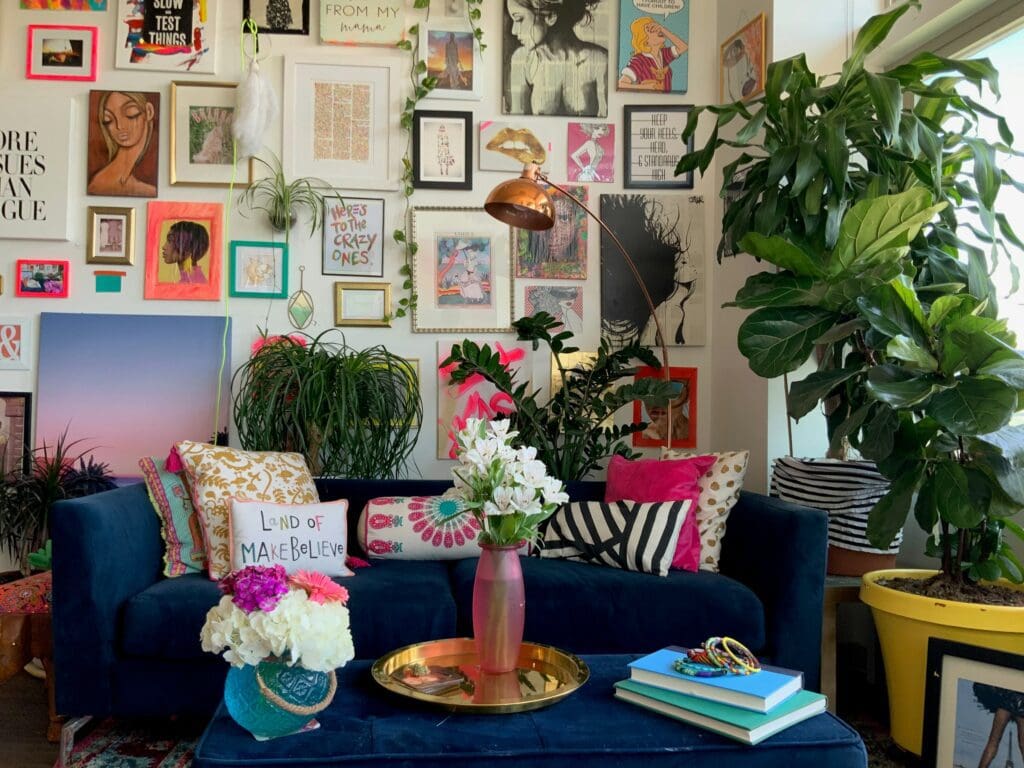

Maximalist interior design style
Maximalist interior design is exactly what it sounds like. It’s a lot of everything: color, texture, shape, detail, accessories. It’s loud, colorful, busy, and fun. Maximalism is by nature, the exact opposite of minimalism – here, “more is more.” A maximalist home gives strong clues about who the owner is and what they love.
Some things you are likely to find in a maximalist interior include a mix of styles of decor and furniture, bold statement pieces, lots of pattern and rich color, and an abundance of accessories and personal artifacts. There is a popular belief that maximalism surged during the covid 19 pandemic and that it’s particularly well-loved by a younger, Gen Z demographic.
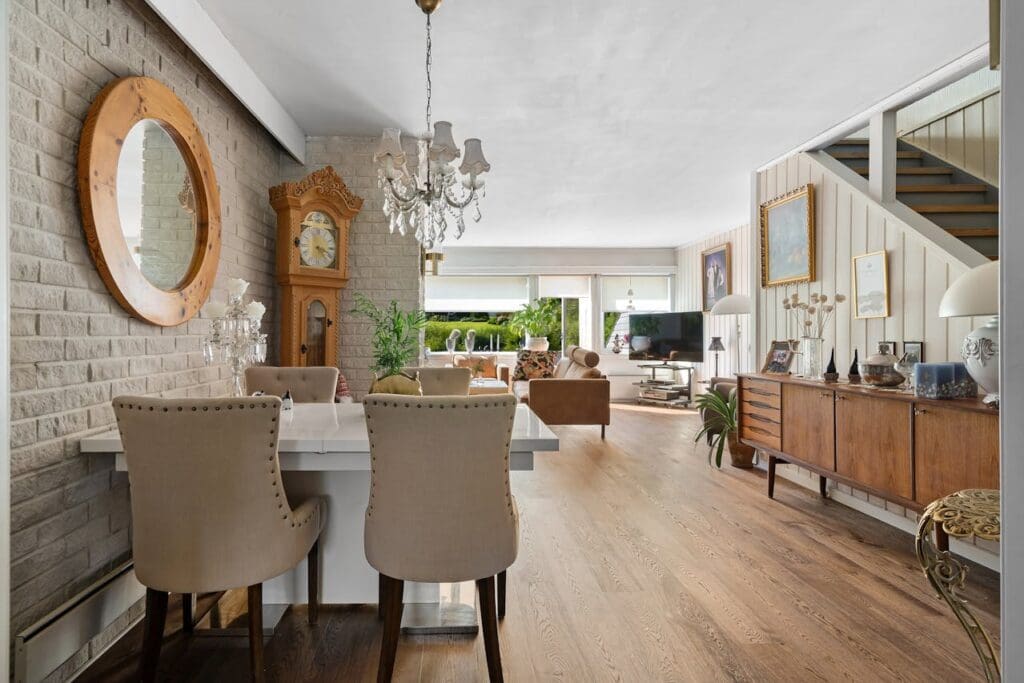

Eclectic interior design style
Eclectic interior design draws inspiration from many different sources, blending different design elements, periods, and styles to create a unique and cohesive space. It's all about mixing and matching furniture, decor, colors, textures, and patterns in unexpected ways.
While there are some similar threads between Maximalist and Eclectic interior design, there are key differences. Both Maximalism and Eclectic styles involve mixing elements and celebrating individuality, but maximalism tends to emphasize excess and opulence, while Eclectic interior design focuses on harmonizing different styles.


Scandinavian interior design style
Scandinavian interior design is characterized by its minimalistic aesthetic, functionality, and connection to nature. Spaces designed in this style are light and airy, with neutral color palettes dominated by whites and soft, muted tones that enhance the sense of spaciousness and tranquility. Natural light floods the rooms through large windows, contributing to the overall brightness and warmth of the space, even during the dark winter months.
Key elements of Scandinavian design include the use of natural materials such as wood, stone, and textiles like wool and linen, which add texture and warmth to the interiors. Furniture is simple, yet functional, focusing on usability and comfort. Cozy textiles, such as plush rugs and knit throws, provide a sense of comfort and hygge, a concept central to Scandinavian lifestyle. Overall, Scandinavian interior design creates inviting and harmonious spaces that prioritize simplicity, comfort, and well-being.
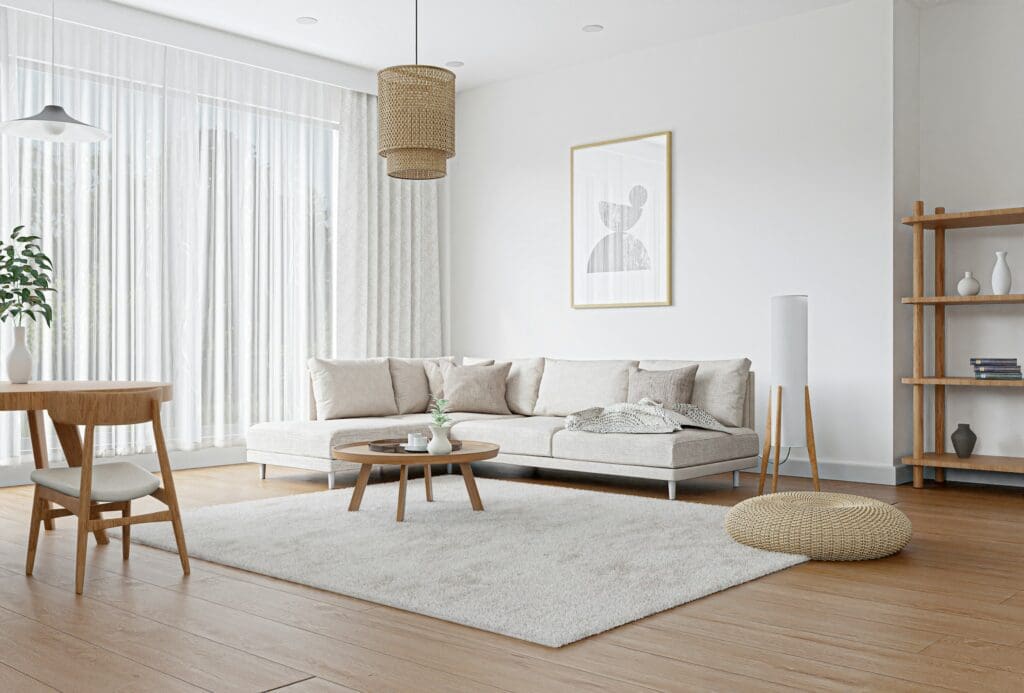

Japandi interior design style style
Japandi style merges elements of Japanese minimalism with Scandinavian functionality and simplicity. It blends the clean lines, neutral colors, and natural materials characteristic of Scandinavian design with the Zen-inspired aesthetic, craftsmanship, and attention to detail found in Japanese design.
Although you may feel like Japandi interior design style has just popped onto the scene, it’s actually a style that’s been around for quite some time. Scandinavian interior designers started visiting Japan and incorporating the style into their own designs around the 1850s.
This design mashup comes to life with:
- A mix of light wood furniture, such as oak or birch, with clean lines and functional forms.
- Neutral color palettes dominated by whites, grays, and earth tones create a calm and serene atmosphere.
- Natural light with a focus on bringing nature indoors through the use of indoor plants, natural fibers, and raw materials like wood, stone, and bamboo.
In terms of decor, Japandi style embraces simplicity and minimalism, with carefully curated and functional pieces. Textures play an essential role, adding warmth and depth to the space. Additionally, there's an emphasis on craftsmanship and quality, with a preference for handmade.
Overall, Japandi style embodies a harmonious blend of two distinct design philosophies, resulting in spaces that are both tranquil and functional.
Grand Millennial interior design style
Grand Millennial style is a design aesthetic that combines traditional, classic elements with modern sensibilities. It's characterized by an appreciation for vintage or antique pieces, classic patterns like chintz or toile, and decorative elements such as needlepoint, fringe, and tassels.
Grand Millennial style often incorporates elements from past eras, such as furniture with ornate details, floral prints, and eclectic collections of items like porcelain figurines or antique books. It embraces a sense of nostalgia and comfort, while still incorporating contemporary touches to keep the look fresh and relevant.
In essence, it's about blending the charm and elegance of the past with the functionality and style of the present, creating spaces that feel both cozy and sophisticated.
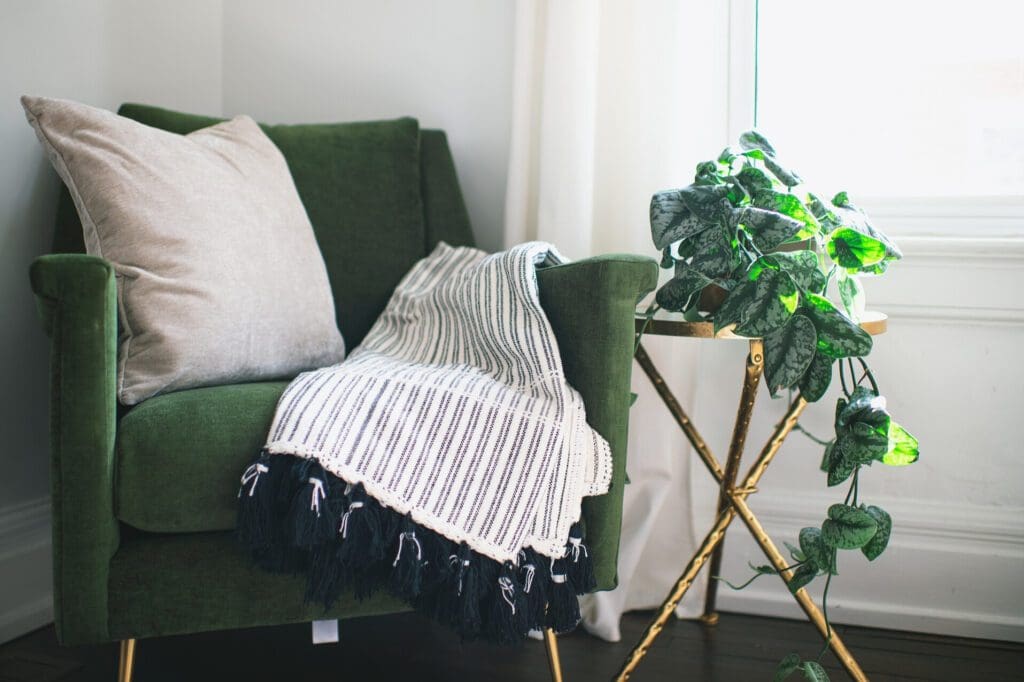

Biophilic interior design style
Biophilic interior design seeks to bring more of the outdoors in and connect people with nature inside their homes. It incorporates elements of nature, natural light, vegetation, and other natural materials into indoor spaces to create environments that enhance well-being, productivity, and overall satisfaction.
The term “biophilia” refers to the innate human tendency to seek connections with nature and other forms of life. Biophilic interior design aims to satisfy this innate human need by bringing elements of nature into interior spaces.
Key elements of biophilic interior design include:
- Natural light: Maximizing the use of natural light in interior spaces through windows, skylights, and other openings to bring the variability and dynamics of natural light patterns indoors.
- Views of nature: Providing views of natural elements such as trees, water bodies, or landscapes from interior spaces to enhance our connection with the outdoors.
- Natural materials: Incorporating natural materials such as wood, stone, bamboo, and cork into interior design elements like flooring, furniture, and finishes.
- Living greenery: Introducing plants and living greenery into interior spaces to improve air quality, reduce stress, and create a sense of well-being.
- Natural patterns and textures: Using patterns and textures inspired by nature, such as organic shapes, fractal patterns, or biomimicry, in interior design elements to evoke a sense of natural environments.
- Water features: Incorporating water elements such as indoor fountains, ponds, or water walls to evoke the calming and soothing qualities of water.
- Natural colors: Using earthy tones, greens, blues, and other colors inspired by nature to create a sense of harmony and tranquility within interior spaces.
Overall, biophilic interior design aims to create environments that promote physical health, mental well-being, and emotional comfort by fostering a deeper connection with nature in the spaces where people live, work, and play.
For more information on Biophilic interior design, check out our full article!
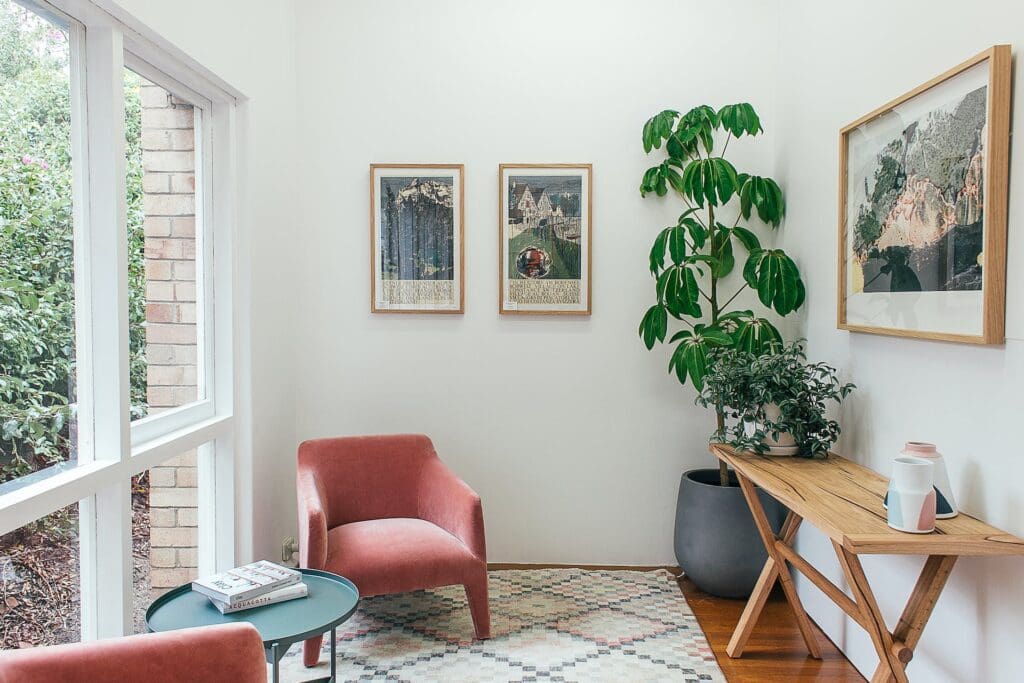

Holistic interior design style
Holistic interior design is an approach that considers the entirety of a space, aiming to create environments that not only look visually appealing but also support the physical, emotional, and spiritual well-being of its occupants. It goes beyond just arranging furniture and choosing color schemes; instead, it integrates various elements such as lighting, airflow, materials, textures, and even psychological and cultural factors to create spaces that feel harmonious and balanced.
In Holistic interior design, there's often an emphasis on sustainability, natural materials, and the use of elements like plants to bring a sense of connection to nature indoors. The goal is to design spaces that promote health, wellness, and a sense of belonging for the people who inhabit them.
Practitioners of holistic interior design may draw inspiration from various disciplines, including traditional Feng Shui, Biophilic design, environmental psychology, and sustainable architecture, among others. The ultimate aim is to create environments that support the holistic well-being of individuals and communities.
To learn more about this interior design style, check out our full article.
Tips for finding your interior design style
As the old saying goes, sometimes you have to know the rules before you can break them. For a lot of us, this is true in decorating our homes. This doesn’t mean you need to become an interior designer before you have hope of creating a space you’ll be happy with. It does mean, though, that spending some time learning about what you’re drawn to may save you some mis-steps and set-backs along the way.
Ideas to increase your interior design style self-knowledge include:
- Poke around on design spaces: Websites and magazines like Pinterest, Houzz, and interior design magazines are great spots to puruse in your free time. Tear out, like, or bookmark things you are drawn to and periodically review. You’ll likely start to see some trends and consistencies in what you like and don’t like that will help you zero in on your personal interior design style.
- Buy a book: One of our favorite books for getting a better sense of your own style is Design the Home You Love by the folks behind the company The Havenly. The book beautifully illustrates many interior design styles and is chock-full of tips for designing a beautiful home.
- Take an interior design quiz: Some interior design quizzes are a little silly and designed more to suck you in than actually help you out. But we’ve found a few that seem pretty on track. They include:
- Cristina Cleveland The quiz is designed to really help, not just entertain but what really sets this one apart is the amount of help that Cristina provides in the quiz results. Her recommendations are quite extensive, offering suggestions on shopping, color palettes and more. And she has a great video series called “Home School” that answers top questions you may have about decorating.
- Houzz – The Houzz “What’s your decorating style?” quiz asks you 9 questions to help you zero in on your style.
- Designer Society of America (DSA) – Of the three quizzes listed, this is probably the fastest and simplest. DSA also offers a style guide that shows photos of 6 key interior design styles to help you start to narrow down your preferences.
Advice from an expert!
A key responsibility of the best interior designers is to help their clients find a home style that is uniquely them. Interior design pro Arlene Lord from Lord Design shared what this means for her.


- Don't rely so heavily on Pinterest and Instagram. They can be great and helpful, but they can also pigeonhole you into an algorithm which narrows your exposure and you can't even begin to understand textures via the internet.
- Get out and see things, sit in things, touch things, and then make your own pin or vision board. What are YOU responding to? What makes YOU feel good? What do YOU want to come home to? This is all that matters. Who cares what's on trend…unless you're a trendy person. You do you.
What if I can’t decide on just one interior design style?
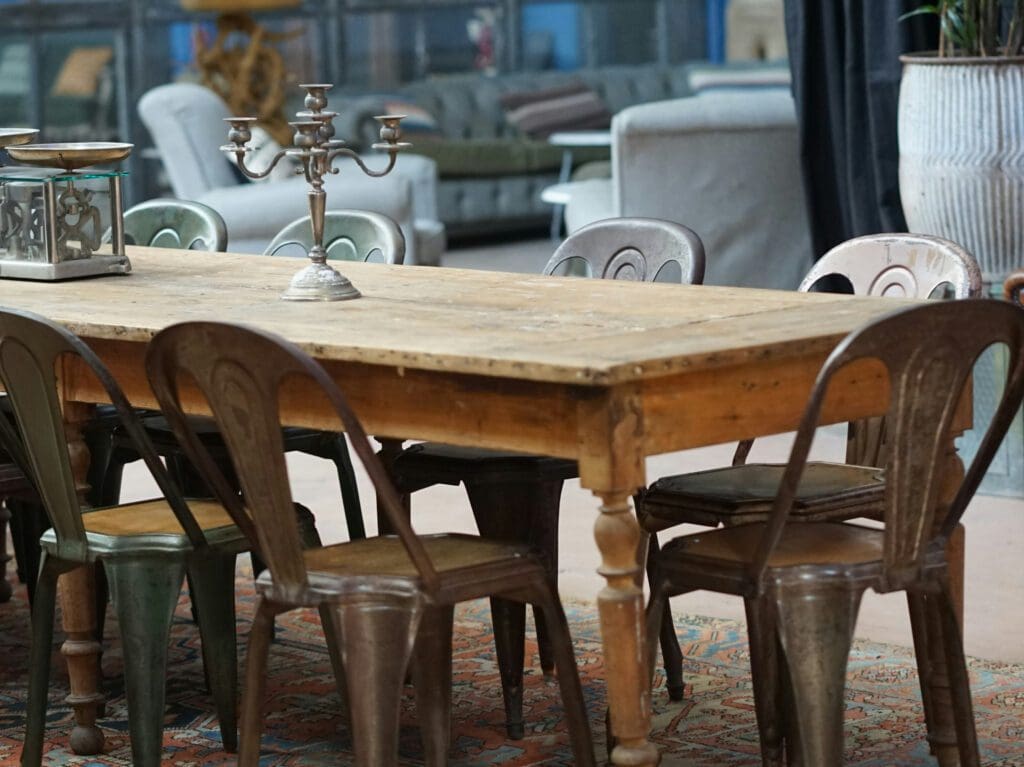

No worries! A lot of people can’t be confined to just one prescribed style. Looking to more than one source of inspiration means you’ll probably end up with a more unique and personal style.
By keeping a few guidelines in mind, you can combine styles in a way that still feels pulled together. These guidelines include:
Select one dominant style
If there are 2 or even 3 styles you admire, decide which one will lead. What you don’t want is an even split which can feel indecisive. Instead, pick one style that will make up the majority of your decisions and a style that you’ll work in as more of an accent.
Know how furniture aligns with your preferred interior design style
Furniture can be a big part of bringing your interior design style to life. By knowing the classic examples and common details of furniture that align with your interior design taste, you’ll increase your chances of being successful.
Check out our full article on popular furniture styles!
Pick an interior design style that works with your lifestyle
Many of us would say we love the clean, breezy feel of a white interior. Unfortunately, if you have kids, dogs, hobbies, or are domestically challenged, this probably isn’t a realistic choice. Consider your life and how you live in your space, where things will experience a lot of wear and tear and consider those factors in your final design scheme.
Consider your color scheme
Regardless of the style you choose for your home, giving some thought to the color scheme can be a great way to bring together different styles and design elements. Using a consistent color palette across your home can help various styles blend more harmoniously and make the whole design feel more intentional. Don’t worry if you’re not sure what colors to choose, there is so much inspiration online and this is also an area where hiring an interior designer, even for a limited consultation, could be a great investment.
FAQs
What interior design styles are trending?
One of the things that’s so exciting about interior design right now is that people seem to be embracing the styles that feel good to them versus what’s “in.” In that spirit, one of things that’s unique about interior design trends today is the emergence and popularity of holistic interior design and biophilic interior design. These trends have surged in popularity due to their emphasis on creating spaces that foster well-being, connectivity with nature, and a harmonious balance between form and function.
Holistic interior design embraces a comprehensive approach to creating living spaces that nurture the mind, body, and spirit. This style prioritizes the integration of natural elements, sustainable materials, and mindful design principles to create environments that promote overall wellness. From incorporating organic textures like wood and stone to utilizing soothing color palettes inspired by nature, holistic design seeks to create spaces that feel both rejuvenating and calming. By considering the interconnectedness of all elements within a space, holistic interior design aims to create environments that support the well-being of both occupants and the planet.
On the other hand, biophilic interior design takes inspiration from the innate human desire to connect with nature. This style seeks to bring the outdoors inside, blurring the boundaries between interior and exterior spaces. Biophilic design incorporates elements such as large windows to maximize natural light, indoor plants to improve air quality and create a sense of vitality, and natural materials like rattan and jute to evoke a sense of the outdoors. By fostering a deeper connection with the natural world, biophilic interior design has been shown to reduce stress, increase productivity, and enhance overall well-being.
Both holistic and biophilic interior design styles represent a shift towards creating spaces that prioritize not only aesthetics but also the health and happiness of those who inhabit them. By embracing these trends, homeowners can create environments that not only look beautiful but also contribute to a sense of balance, harmony, and well-being in their everyday lives.
How many interior design styles are there?
One of the things that is both fun but also frustrating about interior design is that the rules aren’t set in stone. There are endless ways to combine design elements to create new styles and variations on styles and this can make it hard to pin down an exact number. We’ve covered the ones that seem to be the most popular in the US these days above which totals about a dozen styles, but there are certainly more!
Who defines interior design styles?
We all do! It can seem like interior design styles are dictated by some grand organization on high, but really there are many factors that cause interior design styles and trends to evolve and become more or less popular. Interior designers and interior design publications certainly influence design trends but interior design is also influenced by history and even by architecture.
Can you mix interior design styles?
Yes! And you should! But don’t choose ALL of the interior design styles. We’ve included some tips, above, that can help create a successfully mixed style. These include selecting a dominant style, finding your color scheme, and considering how the furniture you select supports your overall vision.
Free tips and inspiration in your inbox
Stay up to date on the latest news in sustainable interior design! Enter your email address below to be included on our newsletter distribution list.

